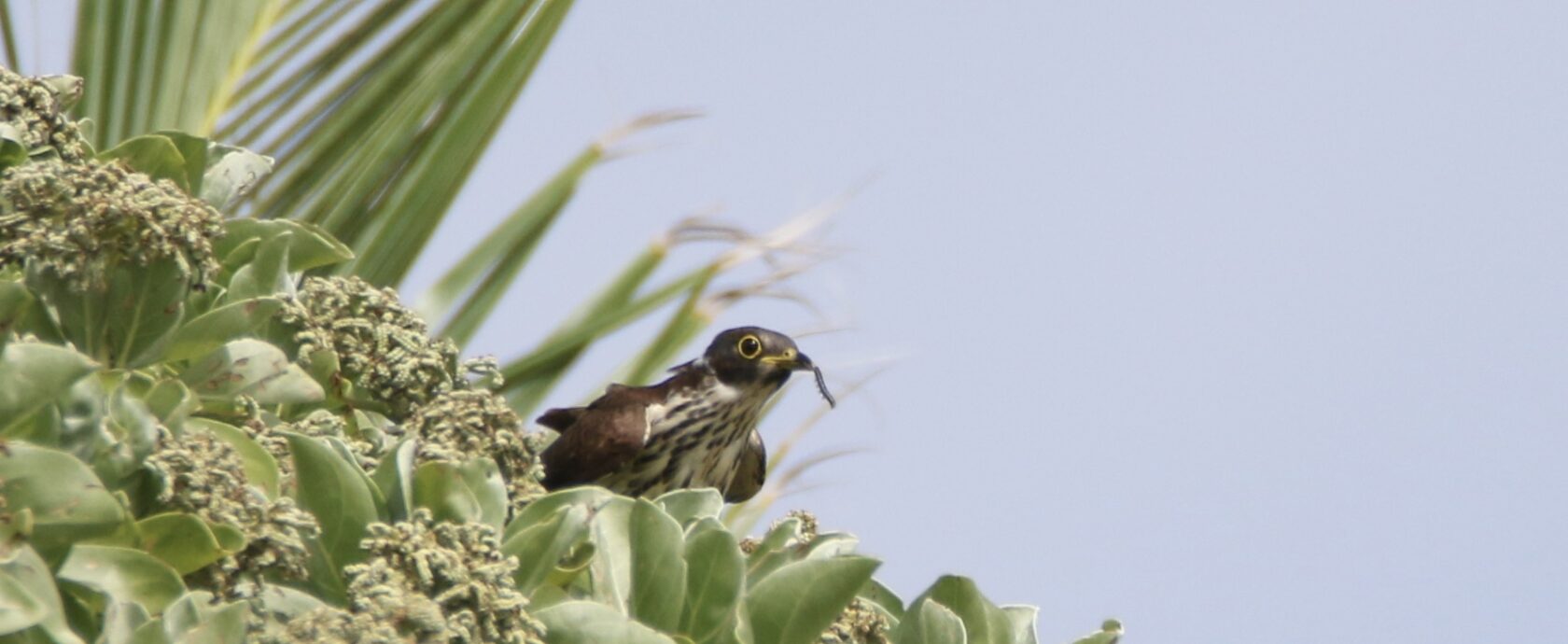Birds The rich biodiversity and isolated environment of the Cocos Keeling Islands provides the perfect milieu for migratory birds
This environment is perfect for migratory birds to feed and replenish their fat reserves over the Northern Hemisphere winter.
There is one endemic subspecies, the Cocos Buff-banded Rail, which can be seen foraging around the pristine picnic area on Direction Island and also spotted on Horsburgh Island.

Birds As the only land mass within a 900 km radius, the Cocos Keeling Islands are unique in bird attraction
We are the only location in Australia that attracts birds on both the East Asian-Australian flyway and the Indian Flyway as well as the Western Paleoarctic. Incredibly, the islands are also often a refuge for birds from Africa or the Middle East.
Over on the Pulu Keeling National Park, the Red-footed Booby has one of the largest breeding colonies in the world and due to the island’s closeness, it can often be seen in the southern atoll.

Birds Common sightings include the White-breasted Waterhen, Intermediate Egret, Western Reef Heron, Saunders’s Tern, Green Junglefowl and several species of waders
Along with these are the ever-present frigatebirds, noddies, boobies and tropicbirds soaring around the atoll. Local tour guides are also up for helping visitors reach hard-to-reach places in the lagoon to find one of the local specialties or even a MEGA or two. The best time to visit Cocos Keeling Islands for birdwatching is from November to early March.
Birding Tours Australia offer special packaged tours on Cocos Keeling Islands and Christmas Island designed for birders, twitchers and photographers.

Crabs, blue-tailed skinks
Crabs, blue-tailed skinks The endless stretches of white-sand beaches and forest floors are a wonderland for crabs
Including the purple land crab, red hermit crab, horn-eyed ghost crab and the huge robber crabs. The Cocos Keeling Islands are also home to red crabs, which are only found here and on Christmas Island.
Also not to be missed are the blue-tailed skinks. The rainbow-hued lizard can be seen roaming free and basking in the tropical sun on Pulu Balan and Pulu Balan Madar after a small population were relocated here from Taronga Zoo, Sydney in a bid to find a new, safe home to grow in the wild.

